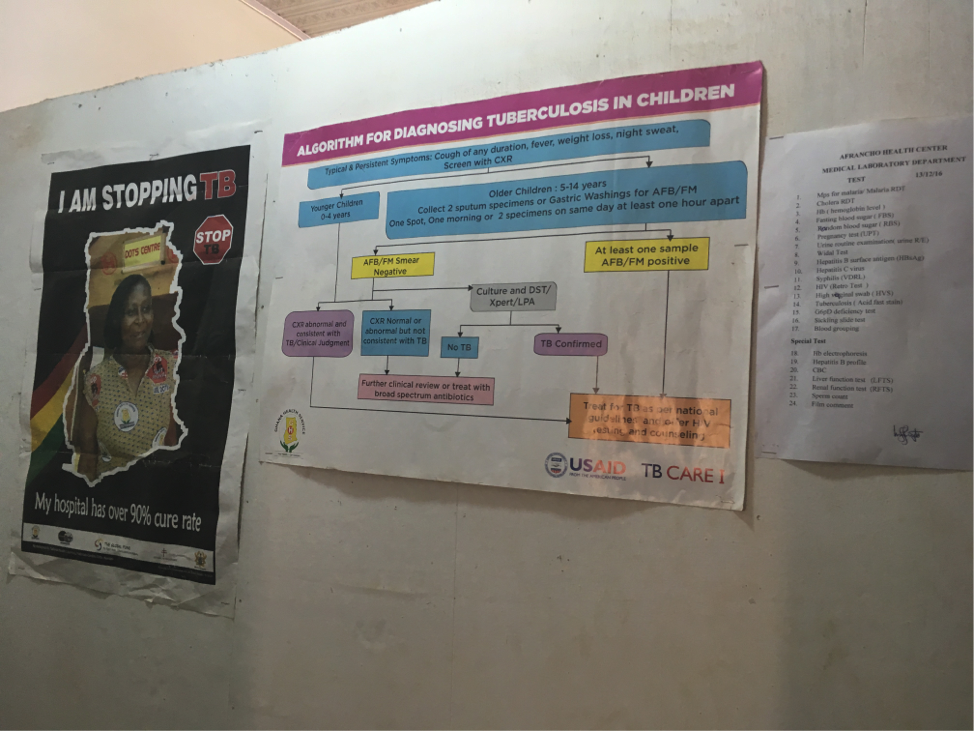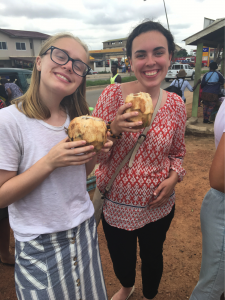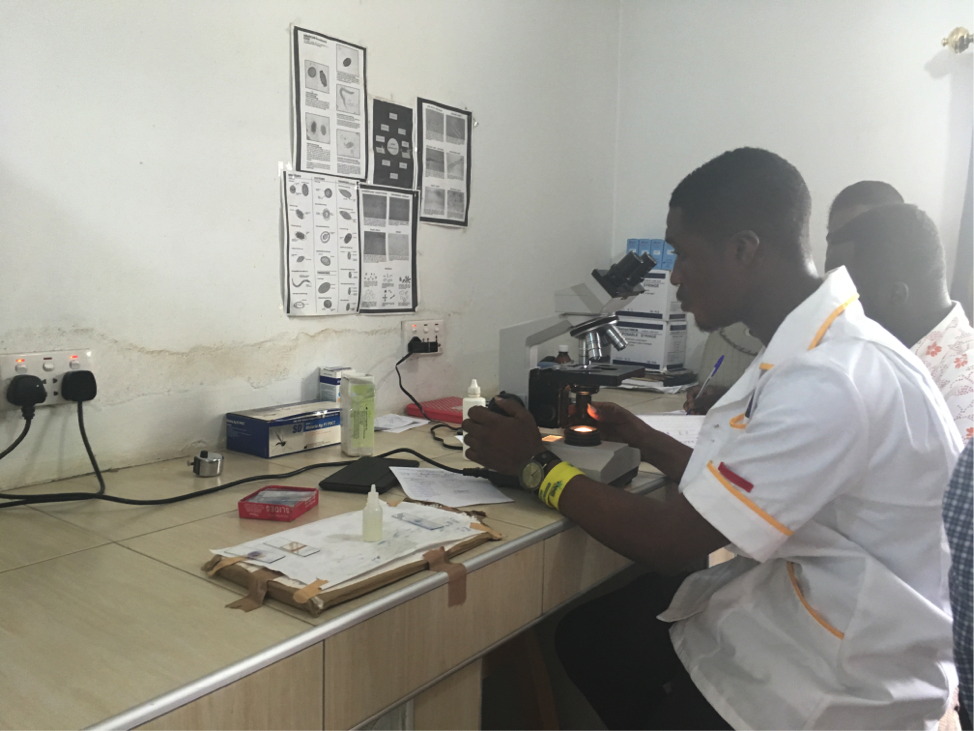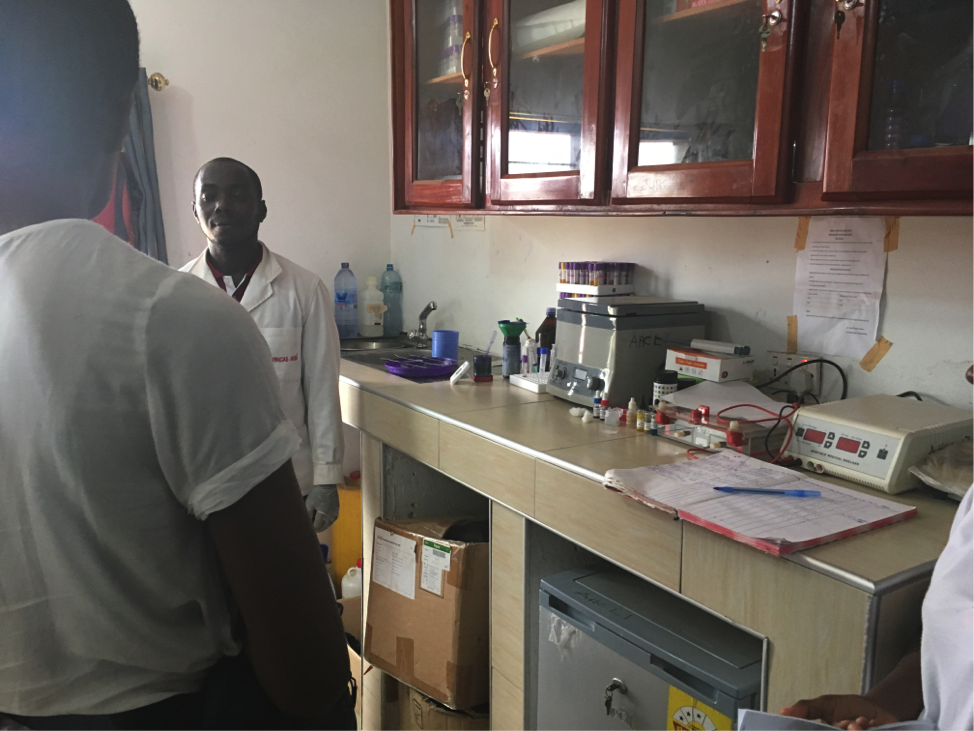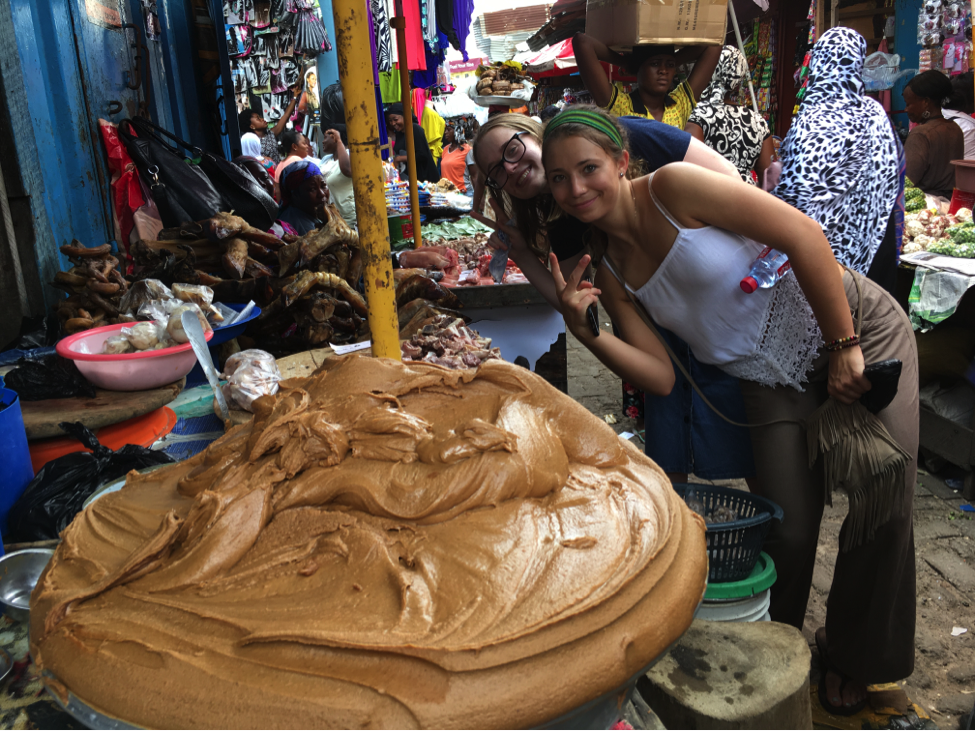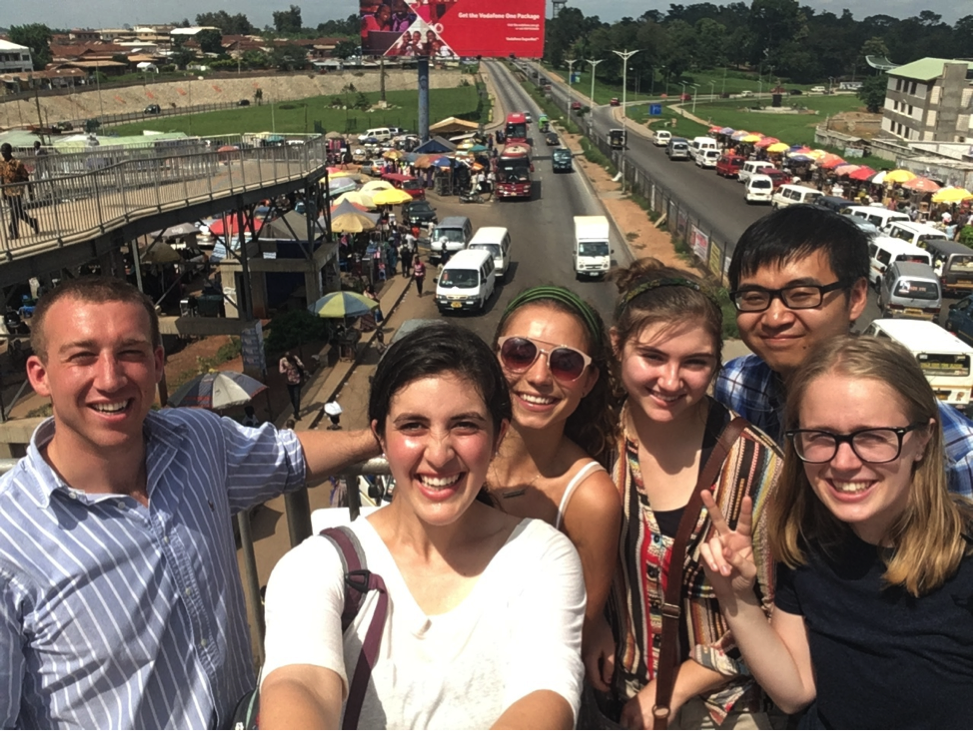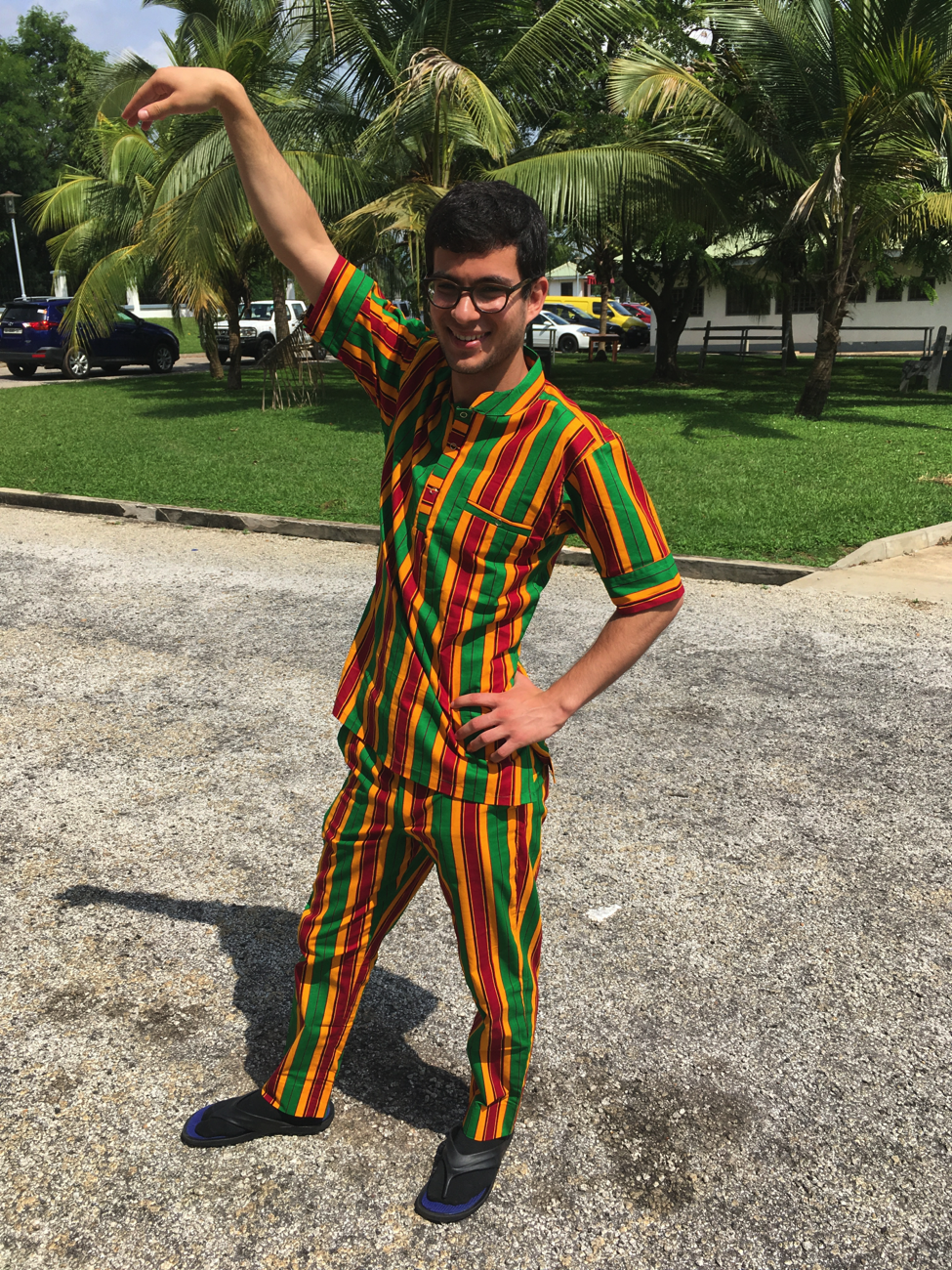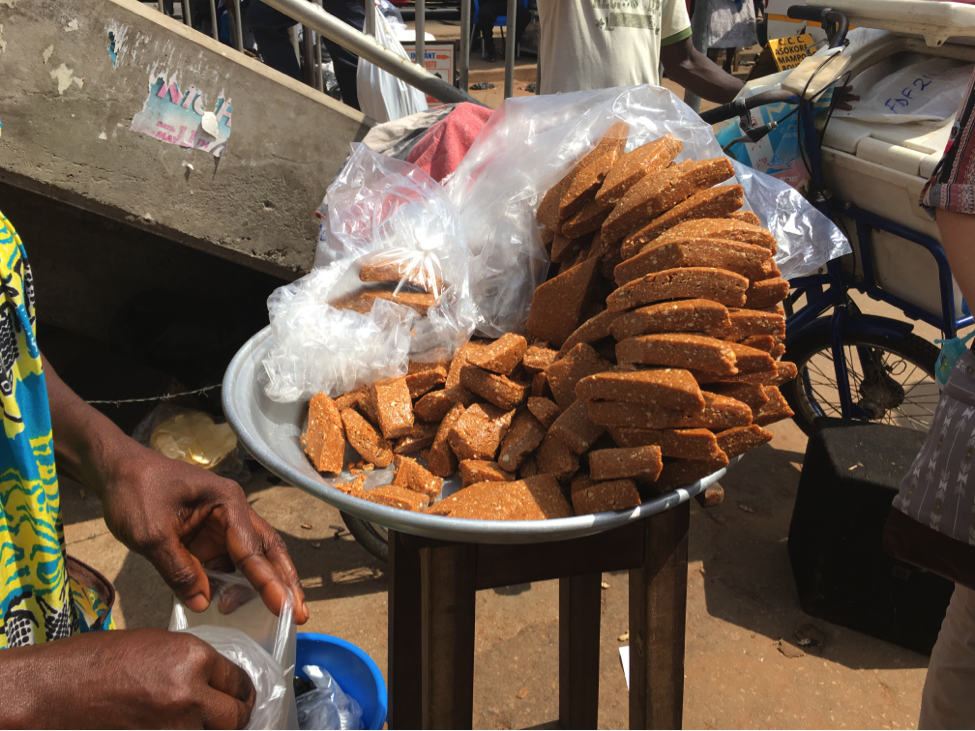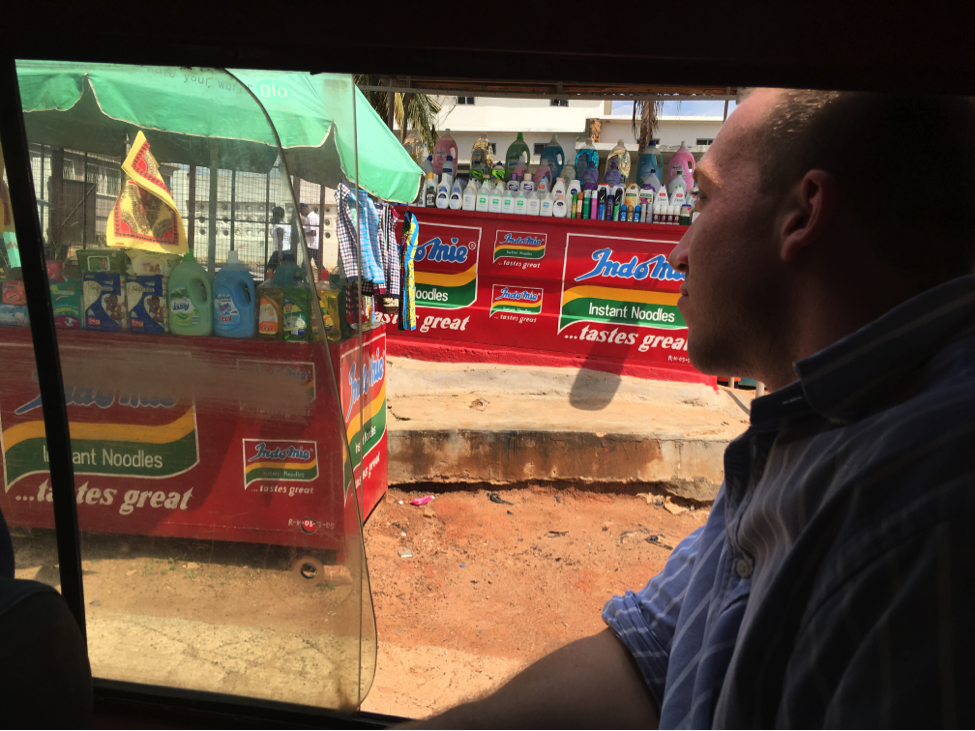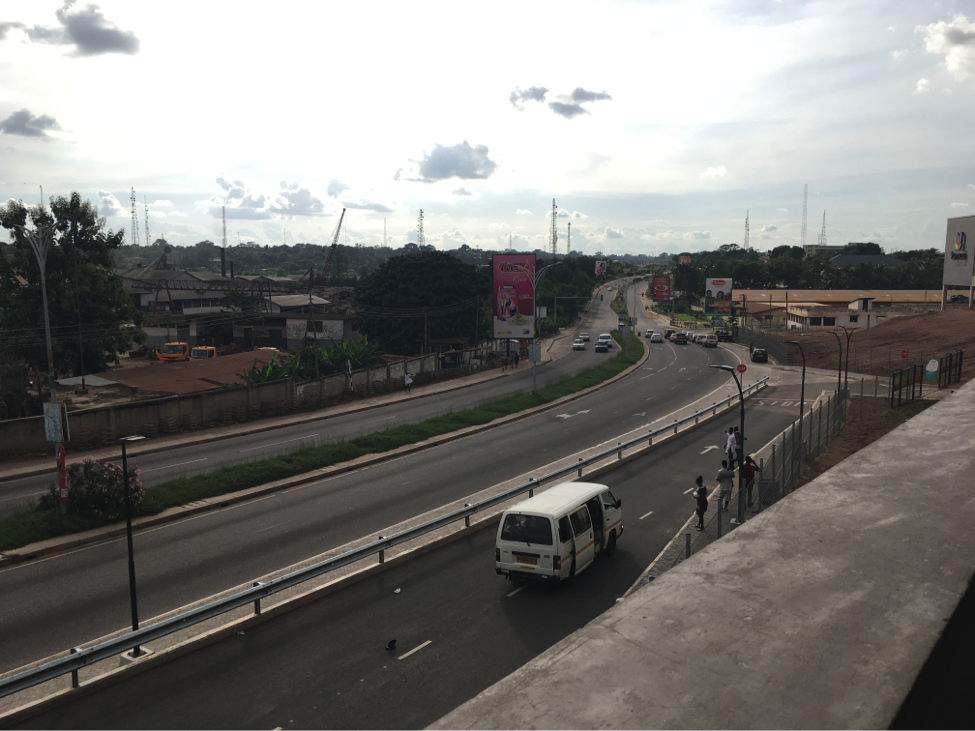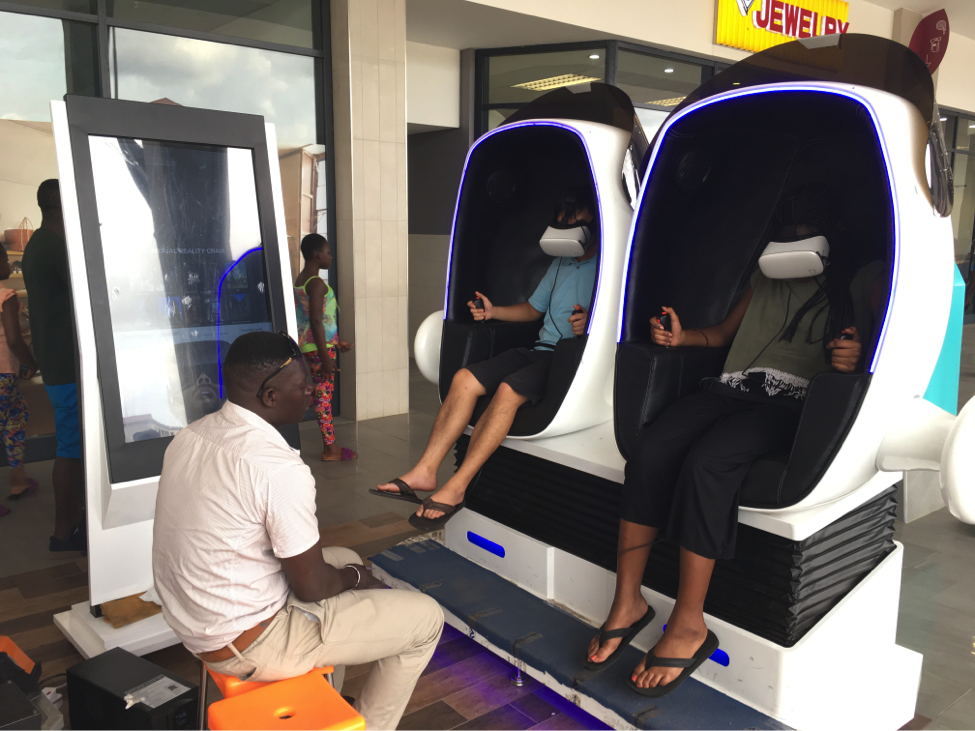by Dave Pontoriero, Biotechnology MS ’18
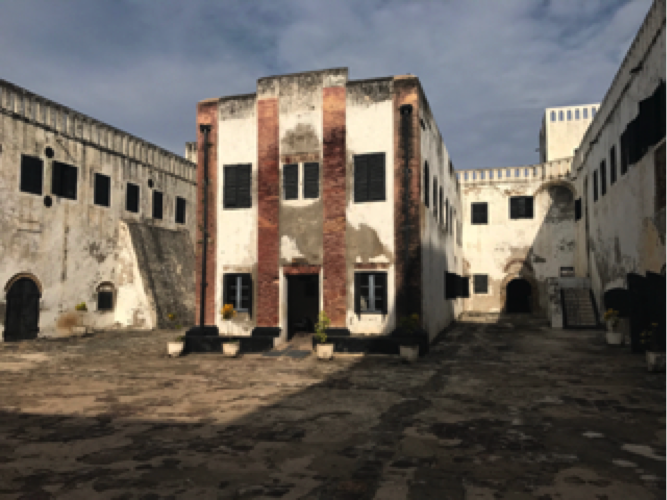
David Issadore, a faculty member in the Department of Bioengineering at the University of Pennsylvania teaches an engineering course ENGR566 – Appropriate Point of Care Diagnostics. As part of this course, he and Miriam Wattenberger from CBE, have taken nine Penn students, most of them majoring in Bioengineering, to Kumasi, Ghana, to study the diagnosis of pediatric tuberculosis. While in Ghana, these students are blogging daily on their experiences.
Today, we said goodbye to our Kumasi friends and left the Ashanti region for the final leg of our trip. After our bonus night in the new student hostel (dormitory), we boarded the KNUST bus for a six-hour road trip to Cape Coast. The drive was pleasant, and the scenery became more coastal as we continued. Most people slept through it, but once the ocean became visible, everyone woke up in excitement because we knew we were getting close to Elmina, a beach town just west of Cape Coast.
As we drove through the town, we noticed that it resembled many of the beach towns back home. Our driver, Uncle Ebo, then parked in front of an enormous white castle. It was located on the edge of a peninsula, with a narrow beach to its left and crashing waves to its right. It had cannons situated all along its upper levels and a bustling group of locals hanging out in front of its entrance. It was the Elmina Slave Castle, also known as St. George’s Castle, and the team started to prepare for the tour.
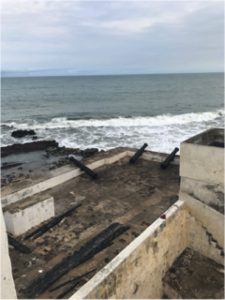
As we entered the castle, the mood became somber. A tour guide provided us with a background of the building, which was a Dutch fort used over the years to facilitate the sale and transport of people from Ghana and the surrounding countries during the slave trade. The first portion of the tour followed the path of a slave during their internment, beginning with the female quarters, then the courtyards used for public punishment, the male quarters, punishment cells, and lastly the final exit where people were loaded onto the ships for their journey across the Atlantic. It was a grim tour to take, and the guide shared some incredibly harrowing stories throughout. The second portion of the tour focused more on other aspects of the fort.
Once we loaded back onto the bus, the team reflected on the experience we had at Elmina Castle as we drove away. After a half-hour drive, we soon arrived to our new rooms at a local beachfront resort called Coconut Grove. Its beautiful facility included a private beach, an ocean-facing restaurant/bar, beachfront swings, a golf course, horse stables, and a crocodile pond (with ~10 real crocodiles!). We went out to a local restaurant with live music, danced a bit, then headed home to enjoy the amenities during one of our last nights together as a team.


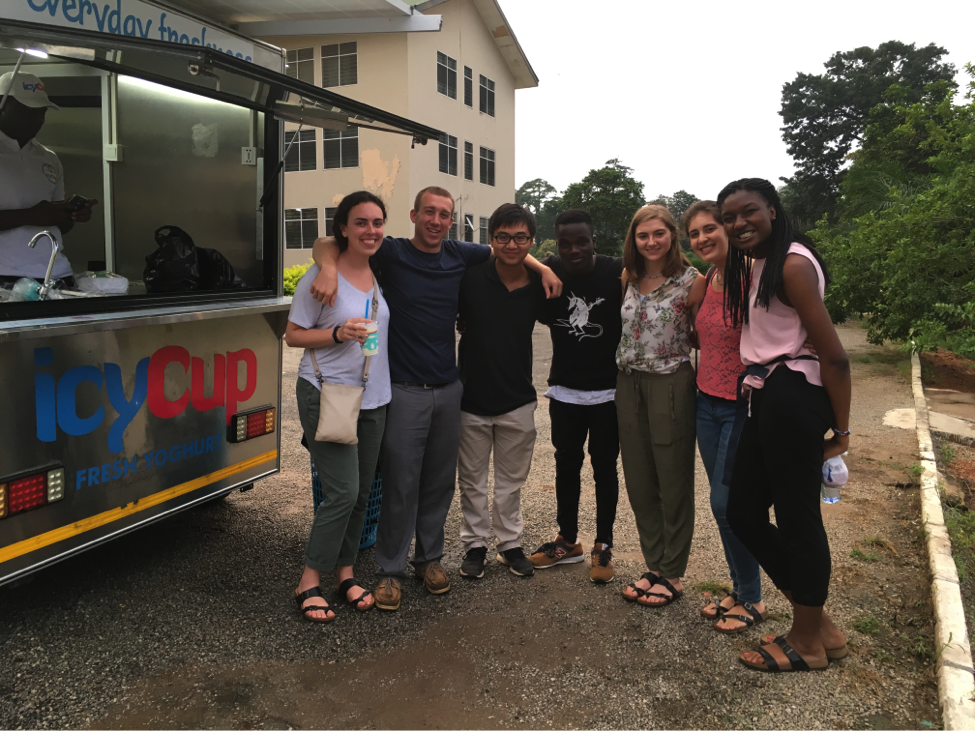


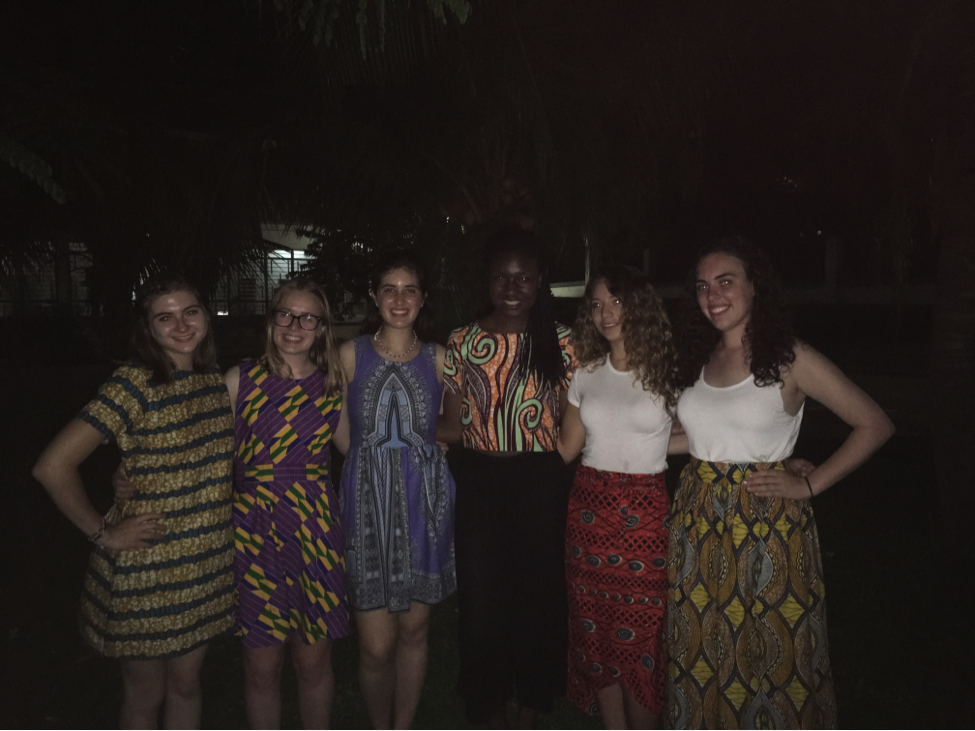
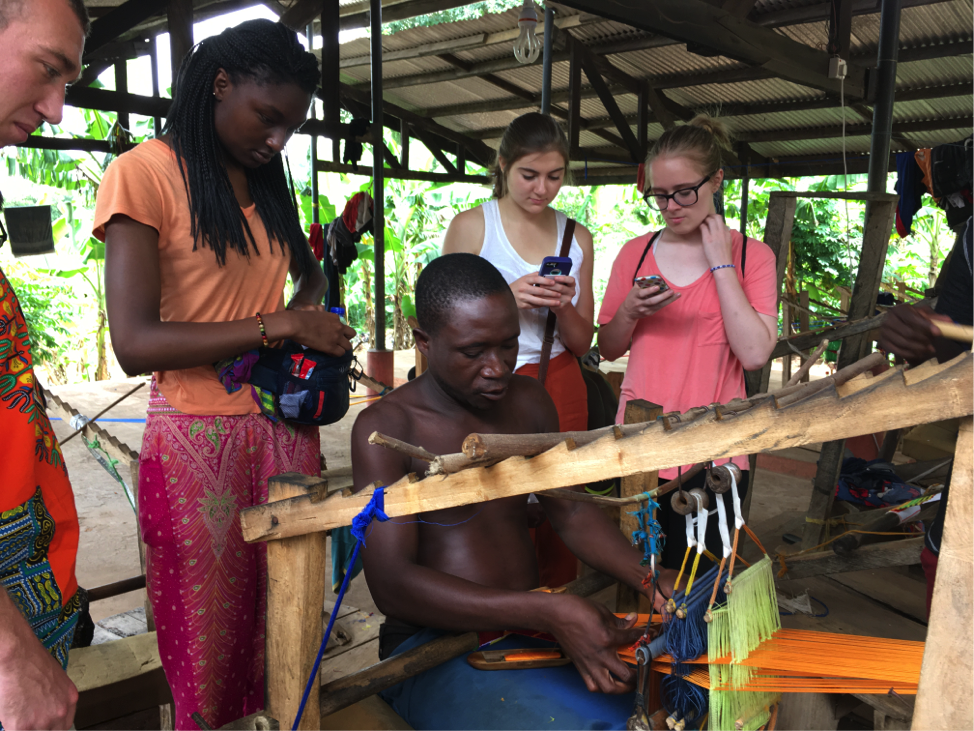
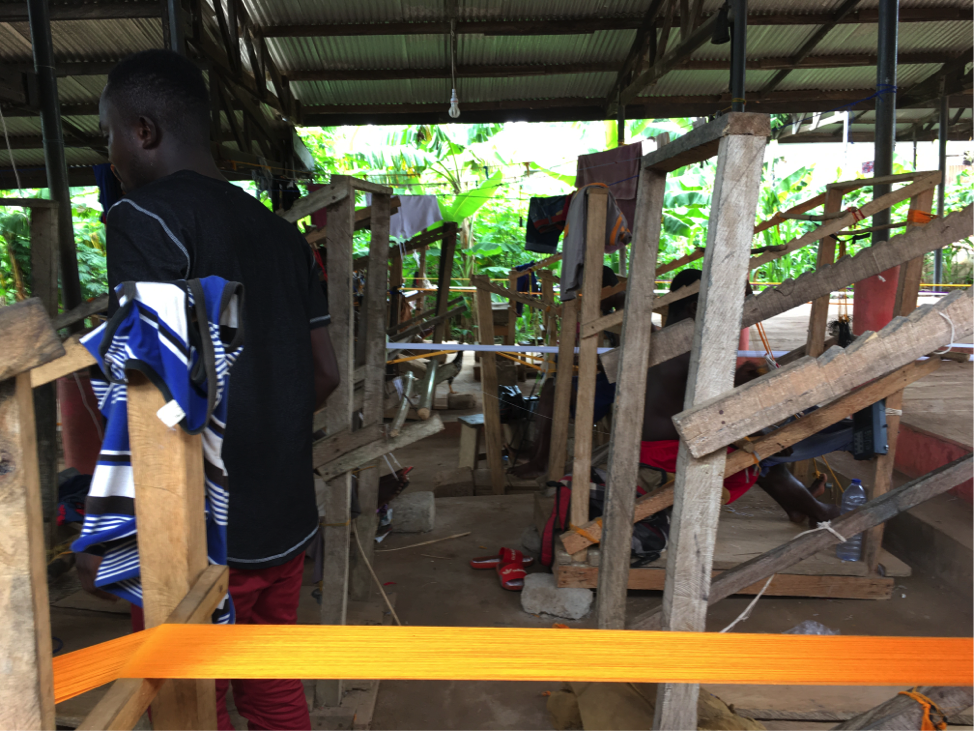
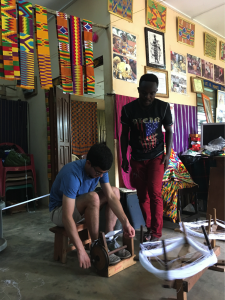
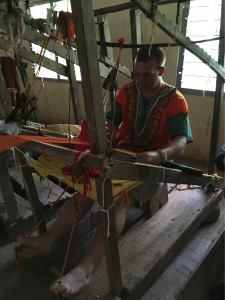
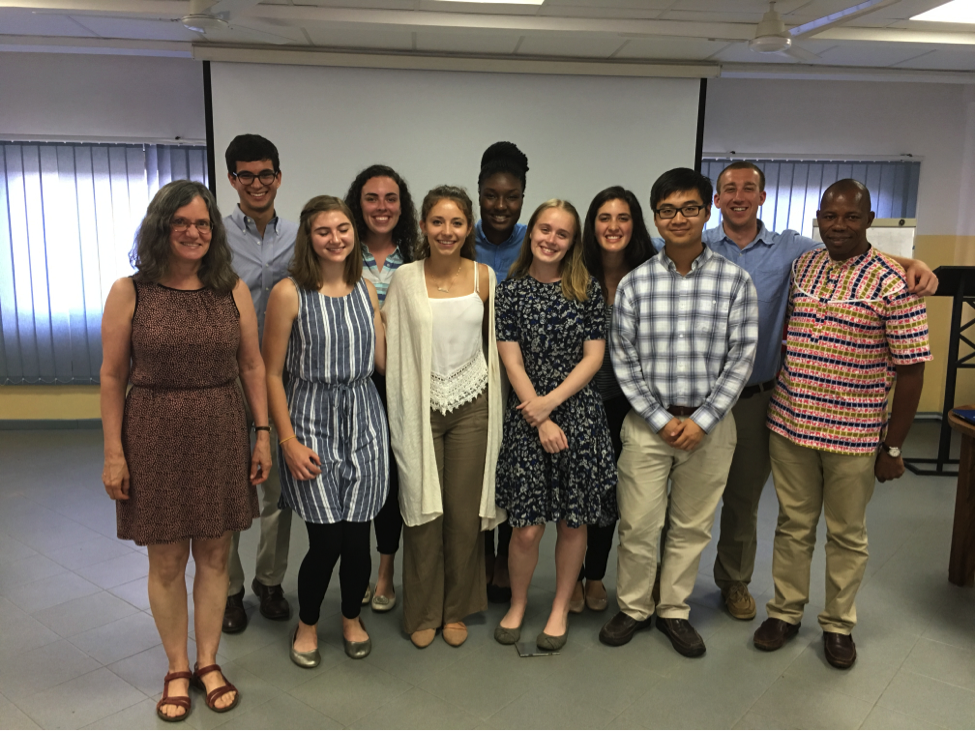

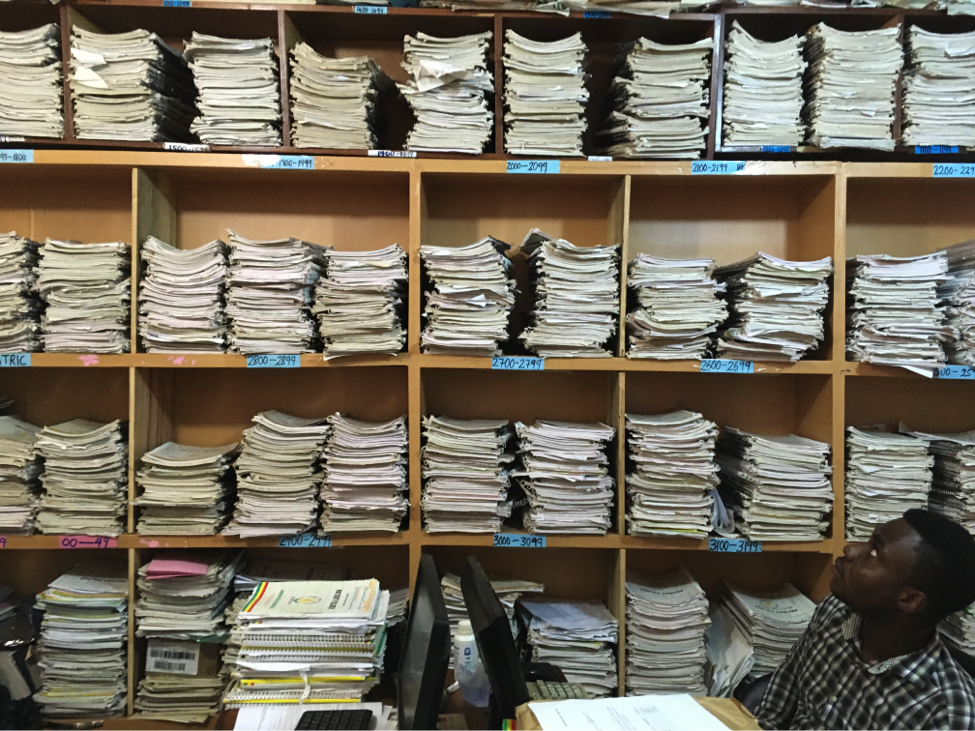

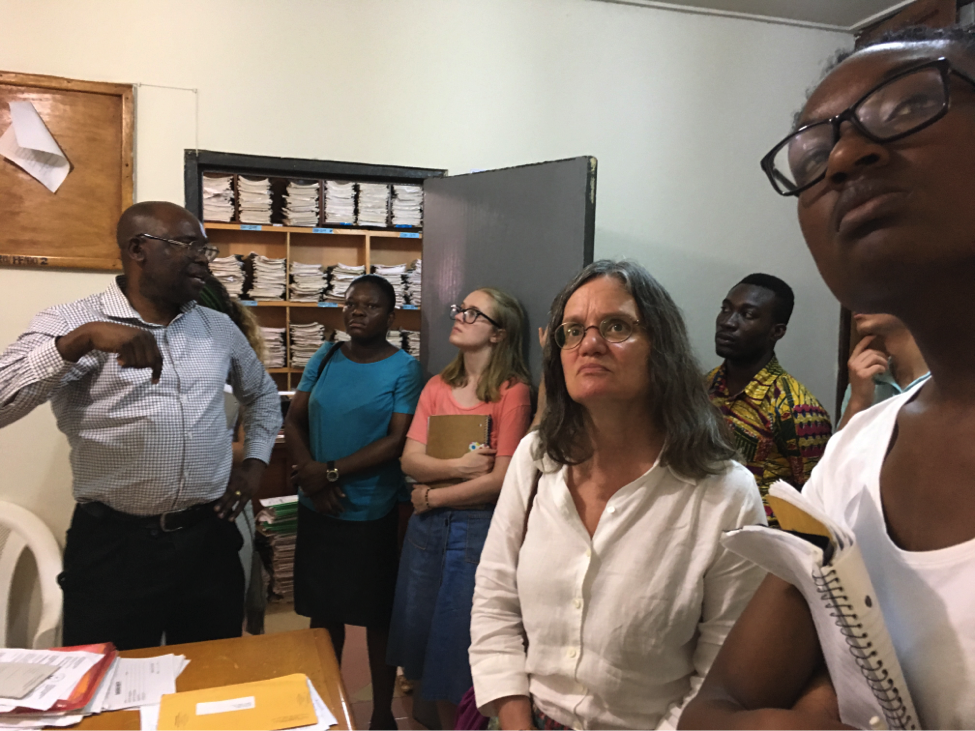
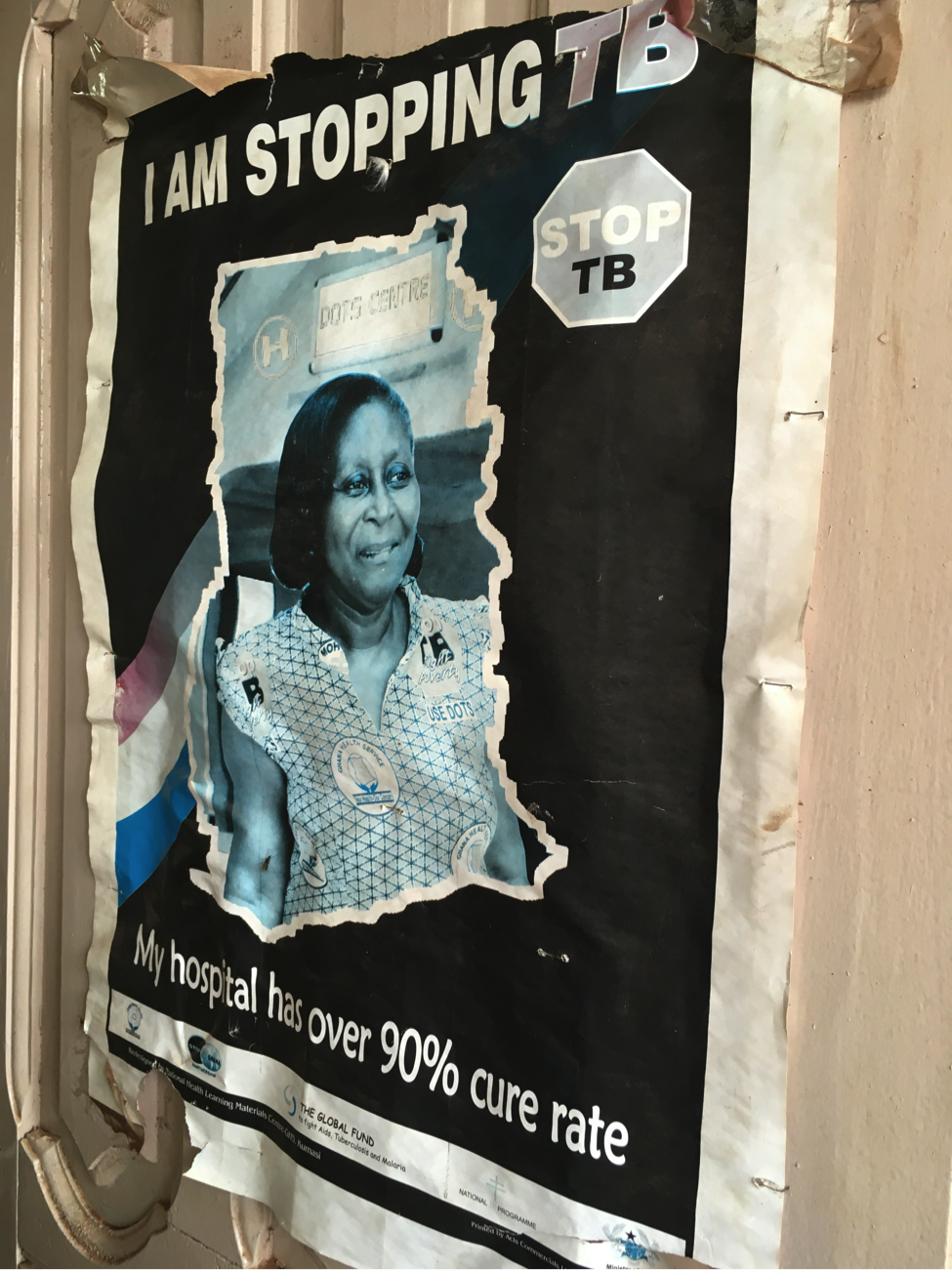

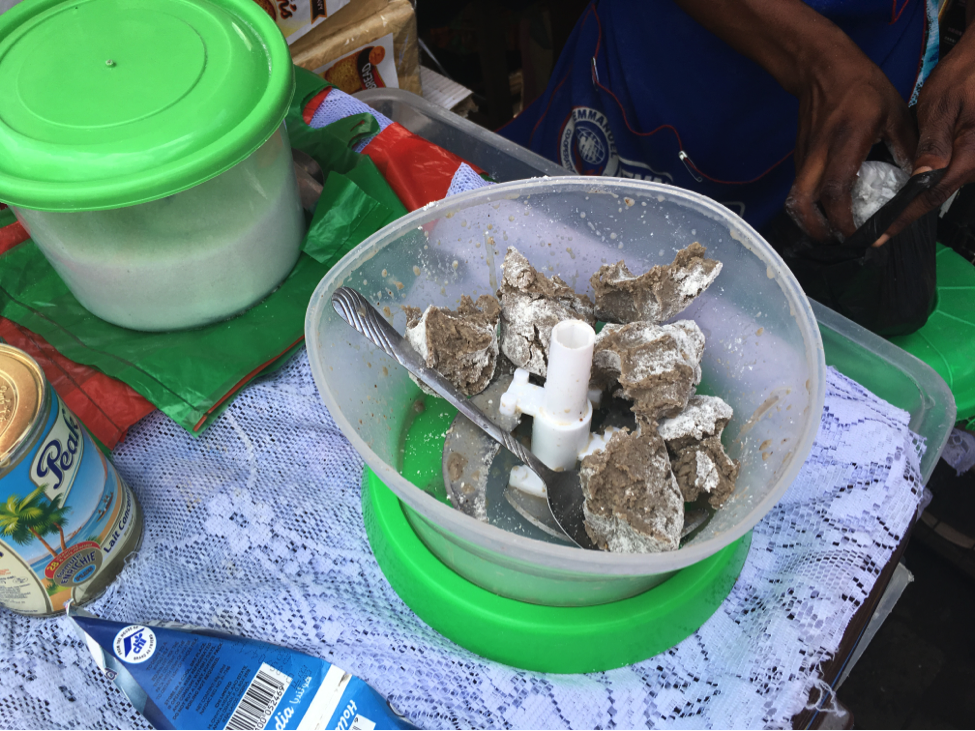

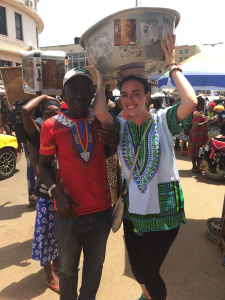 Students Kate Panzer (top) and Hope McMahon (bottom) try out a kayayei’s large metal bowl as part of the scavenger hunt in the Adum Market.
Students Kate Panzer (top) and Hope McMahon (bottom) try out a kayayei’s large metal bowl as part of the scavenger hunt in the Adum Market.